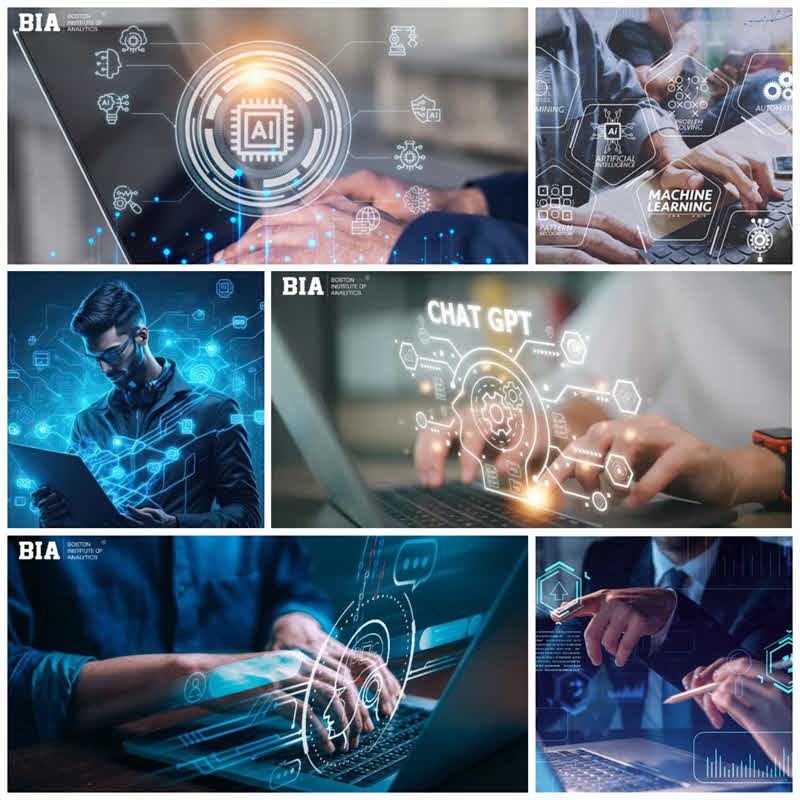
Building AI-Driven Knowledge Graphs from Unstructured Data
Last updated: December 07, 2025 Read in fullscreen view
- 25 Nov 2025
 How AI Agents Are Redefining Enterprise Automation and Decision-Making 27/42
How AI Agents Are Redefining Enterprise Automation and Decision-Making 27/42 - 05 Oct 2025
 The New Facebook Algorithm: A Paradigm Shift in Content Discovery 19/46
The New Facebook Algorithm: A Paradigm Shift in Content Discovery 19/46 - 01 Jul 2025
 The Hidden Costs of Not Adopting AI Agents: Risk of Falling Behind 17/108
The Hidden Costs of Not Adopting AI Agents: Risk of Falling Behind 17/108 - 07 Nov 2025
 Online vs. Offline Machine Learning Courses in South Africa: Which One Should You Pick? 16/30
Online vs. Offline Machine Learning Courses in South Africa: Which One Should You Pick? 16/30 - 21 Nov 2025
 The Rise of AgentOps: How Enterprises Are Managing and Scaling AI Agents 12/43
The Rise of AgentOps: How Enterprises Are Managing and Scaling AI Agents 12/43 - 03 Nov 2023
 Why Is Billable Viable Product An Alternative To Minimum Viable Product? 12/165
Why Is Billable Viable Product An Alternative To Minimum Viable Product? 12/165 - 12 Oct 2022
 14 Common Reasons Software Projects Fail (And How To Avoid Them) 10/504
14 Common Reasons Software Projects Fail (And How To Avoid Them) 10/504 - 06 Nov 2025
 Top 10 AI Development Companies in the USA to Watch in 2026 10/36
Top 10 AI Development Companies in the USA to Watch in 2026 10/36 - 28 Jul 2025
 Data Modernization for SMBs: Small Steps, Big Impact 9/115
Data Modernization for SMBs: Small Steps, Big Impact 9/115 - 18 Jul 2024
 The 8 Best ways to Innovate your SAAS Business Model in 2024 8/205
The 8 Best ways to Innovate your SAAS Business Model in 2024 8/205 - 30 Jul 2024
 The Future of IT Consulting: Trends and Opportunities 8/131
The Future of IT Consulting: Trends and Opportunities 8/131 - 27 Jul 2024
 Positive Psychology in the Digital Age: Future Directions and Technologies 6/337
Positive Psychology in the Digital Age: Future Directions and Technologies 6/337 - 05 Aug 2024
 Revisiting the Mistake That Halted Japan's Software Surge 6/322
Revisiting the Mistake That Halted Japan's Software Surge 6/322 - 14 Aug 2024
 From Steel to Software: The Reluctant Evolution of Japan's Tech Corporates 6/488
From Steel to Software: The Reluctant Evolution of Japan's Tech Corporates 6/488 - 13 Oct 2021
 Outsourcing Software Development: MVP, Proof of Concept (POC) and Prototyping. Which is better? 6/424
Outsourcing Software Development: MVP, Proof of Concept (POC) and Prototyping. Which is better? 6/424 - 08 Nov 2022
 4 tips for meeting tough deadlines when outsourcing projects to software vendor 6/254
4 tips for meeting tough deadlines when outsourcing projects to software vendor 6/254 - 28 Jul 2022
 POC, Prototypes, Pilots and MVP: What Are the Differences? 6/606
POC, Prototypes, Pilots and MVP: What Are the Differences? 6/606 - 01 Sep 2022
 Facts Chart: Why Do Software Projects Fail? 6/540
Facts Chart: Why Do Software Projects Fail? 6/540 - 11 Oct 2022
 Why choose Billable Viable Product (BVP) over Minimum Viable Product (MVP) 5/315
Why choose Billable Viable Product (BVP) over Minimum Viable Product (MVP) 5/315 - 31 Aug 2022
 What are the best practices for software contract negotiations? 5/215
What are the best practices for software contract negotiations? 5/215 - 05 Mar 2021
 How do you minimize risks when you outsource software development? 5/317
How do you minimize risks when you outsource software development? 5/317 - 24 Dec 2024
 Artificial Intelligence and Cybersecurity: Building Trust in EFL Tutoring 5/144
Artificial Intelligence and Cybersecurity: Building Trust in EFL Tutoring 5/144 - 07 Oct 2025
 Case Study: Using the “Messaging House” Framework to Build a Digital Transformation Roadmap 5/45
Case Study: Using the “Messaging House” Framework to Build a Digital Transformation Roadmap 5/45 - 28 Nov 2025
 How AI Will Transform Vendor Onboarding and Seller Management in 2026 4/21
How AI Will Transform Vendor Onboarding and Seller Management in 2026 4/21 - 06 Mar 2021
 4 things you need to do before getting an accurate quote for your software development 4/615
4 things you need to do before getting an accurate quote for your software development 4/615 - 12 Dec 2021
 Zero Sum Games Agile vs. Waterfall Project Management Methods 4/374
Zero Sum Games Agile vs. Waterfall Project Management Methods 4/374 - 04 Oct 2022
 Which ERP implementation strategy is right for your business? 4/278
Which ERP implementation strategy is right for your business? 4/278 - 18 Jul 2021
 How To Ramp Up An Offshore Software Development Team Quickly 3/516
How To Ramp Up An Offshore Software Development Team Quickly 3/516 - 16 Apr 2021
 Insightful Business Technology Consulting at TIGO 3/376
Insightful Business Technology Consulting at TIGO 3/376 - 09 Mar 2022
 Consultant Implementation Pricing 3/184
Consultant Implementation Pricing 3/184 - 16 Feb 2021
 Choose Outsourcing for Your Non Disclosure Agreement (NDA) 3/150
Choose Outsourcing for Your Non Disclosure Agreement (NDA) 3/150 - 27 Feb 2025
 How AI Agents are Changing Software Development? 3/170
How AI Agents are Changing Software Development? 3/170 - 09 Oct 2024
 Short-Form Video Advertising: The Secret to Captivating Your Audience 3/107
Short-Form Video Advertising: The Secret to Captivating Your Audience 3/107 - 05 Sep 2023
 The Cold Start Problem: How to Start and Scale Network Effects 3/167
The Cold Start Problem: How to Start and Scale Network Effects 3/167 - 09 Jul 2024
 What Is Artificial Intelligence and How Is It Used Today? 3/216
What Is Artificial Intelligence and How Is It Used Today? 3/216 - 01 Dec 2023
 Laws of Project Management 3/249
Laws of Project Management 3/249 - 18 Aug 2024
 The Future of Web Development: Emerging Trends and Technologies Every Developer Should Know 2/175
The Future of Web Development: Emerging Trends and Technologies Every Developer Should Know 2/175 - 10 Sep 2024
 Leading Remote Teams in Hybrid Work Environments 2/125
Leading Remote Teams in Hybrid Work Environments 2/125 - 04 Oct 2023
 The Future of Work: Harnessing AI Solutions for Business Growth 2/258
The Future of Work: Harnessing AI Solutions for Business Growth 2/258 - 22 Nov 2024
 The Role of AI in Enhancing Business Efficiency and Decision-Making 2/155
The Role of AI in Enhancing Business Efficiency and Decision-Making 2/155 - 01 May 2024
 Warren Buffett’s Golden Rule for Digital Transformation: Avoiding Tech Overload 2/188
Warren Buffett’s Golden Rule for Digital Transformation: Avoiding Tech Overload 2/188 - 21 Aug 2024
 What is Singularity and Its Impact on Businesses? 2/324
What is Singularity and Its Impact on Businesses? 2/324 - 17 Mar 2025
 Integrating Salesforce with Yardi: A Guide to Achieving Success in Real Estate Business 2/141
Integrating Salesforce with Yardi: A Guide to Achieving Success in Real Estate Business 2/141 - 25 Jan 2025
 The Decline of Traditional SaaS and the Rise of AI-first Applications 2/73
The Decline of Traditional SaaS and the Rise of AI-first Applications 2/73 - 21 Apr 2025
 Agent AI in Multimodal Interaction: Transforming Human-Computer Engagement 2/148
Agent AI in Multimodal Interaction: Transforming Human-Computer Engagement 2/148 - 05 Jun 2025
 How AI-Driven Computer Vision Is Changing the Face of Retail Analytics 2/77
How AI-Driven Computer Vision Is Changing the Face of Retail Analytics 2/77 - 10 Apr 2021
 RFP vs POC: Why the proof of concept is replacing the request for proposal 2/254
RFP vs POC: Why the proof of concept is replacing the request for proposal 2/254 - 07 Jul 2021
 The 5 Levels of IT Help Desk Support 2/380
The 5 Levels of IT Help Desk Support 2/380 - 04 Oct 2021
 Product Validation: The Key to Developing the Best Product Possible 2/295
Product Validation: The Key to Developing the Best Product Possible 2/295 - 28 Oct 2022
 Build Operate Transfer (B.O.T) Model in Software Outsourcing 2/361
Build Operate Transfer (B.O.T) Model in Software Outsourcing 2/361 - 17 Jun 2021
 What is IT-business alignment? 2/343
What is IT-business alignment? 2/343 - 08 Aug 2022
 Difference between Power BI and Datazen 2/297
Difference between Power BI and Datazen 2/297 - 21 Dec 2023
 Top 12 Low-Code Platforms To Use in 2024 2/1149
Top 12 Low-Code Platforms To Use in 2024 2/1149 - 31 Dec 2022
 The New Normal for Software Development 2/343
The New Normal for Software Development 2/343 - 17 Oct 2025
 MLOps vs AIOps: What’s the Difference and Why It Matters 2/67
MLOps vs AIOps: What’s the Difference and Why It Matters 2/67 - 24 Oct 2025
 AI Agents in SaaS Platforms: Automating User Support and Onboarding 1/52
AI Agents in SaaS Platforms: Automating User Support and Onboarding 1/52 - 20 Aug 2025
 What Is Agentic AI? The Next Phase of Artificial Intelligence 1/96
What Is Agentic AI? The Next Phase of Artificial Intelligence 1/96 - 03 Jan 2024
 Why Partnership is important for Growth? 1/145
Why Partnership is important for Growth? 1/145 - 31 Dec 2022
 Future of Software Development Trends and Predictions for 2023 1/120
Future of Software Development Trends and Predictions for 2023 1/120 - 30 Oct 2022
 How Much Does MVP Development Cost in 2023? 1/170
How Much Does MVP Development Cost in 2023? 1/170 - 16 Aug 2022
 What is a Headless CMS? 1/225
What is a Headless CMS? 1/225 - 16 Sep 2022
 Examples Of Augmented Intelligence In Today’s Workplaces Shaping the Business as Usual 1/394
Examples Of Augmented Intelligence In Today’s Workplaces Shaping the Business as Usual 1/394 - 07 Oct 2022
 Digital Transformation: Become a Technology Powerhouse 1/216
Digital Transformation: Become a Technology Powerhouse 1/216 - 06 May 2025
 How Machine Learning Is Transforming Data Analytics Workflows 1/148
How Machine Learning Is Transforming Data Analytics Workflows 1/148 - 20 Feb 2025
 How Machine Learning is Shaping the Future of Digital Advertising 1/76
How Machine Learning is Shaping the Future of Digital Advertising 1/76 - 29 Oct 2024
 Top AI Tools and Frameworks You’ll Master in an Artificial Intelligence Course 1/328
Top AI Tools and Frameworks You’ll Master in an Artificial Intelligence Course 1/328 - 02 Dec 2024
 The Intersection of AI and Business Analytics: Key Concepts to Master in Your Business Analytics Course 1/253
The Intersection of AI and Business Analytics: Key Concepts to Master in Your Business Analytics Course 1/253 - 01 May 2023
 CTO Interview Questions 1/296
CTO Interview Questions 1/296 - 09 Feb 2023
 The Challenge of Fixed-Bid Software Projects 1/191
The Challenge of Fixed-Bid Software Projects 1/191 - 05 Aug 2024
 Affordable Tech: How Chatbots Enhance Value in Healthcare Software 1/142
Affordable Tech: How Chatbots Enhance Value in Healthcare Software 1/142 - 12 Aug 2024
 Understanding Google Analytics in Mumbai: A Beginner's Guide 1/84
Understanding Google Analytics in Mumbai: A Beginner's Guide 1/84 - 20 Nov 2022
 Software Requirements Are A Communication Problem /233
Software Requirements Are A Communication Problem /233 - 25 Sep 2024
 Enhancing Decision-Making Skills with an MBA: Data-Driven Approaches for Business Growth /177
Enhancing Decision-Making Skills with an MBA: Data-Driven Approaches for Business Growth /177 - 06 Mar 2024
 [SemRush] What Are LSI Keywords & Why They Don‘t Matter /131
[SemRush] What Are LSI Keywords & Why They Don‘t Matter /131 - 10 Sep 2024
 AI in Email Marketing: Personalization and Automation /154
AI in Email Marketing: Personalization and Automation /154 - 17 Mar 2025
 IT Consultants in Digital Transformation /62
IT Consultants in Digital Transformation /62 - 23 Jun 2025
 AI Avatars in the Metaverse: How Digital Beings Are Redefining Identity and Social Interaction /85
AI Avatars in the Metaverse: How Digital Beings Are Redefining Identity and Social Interaction /85 - 03 Nov 2022
 Top questions and answers you must know before ask for software outsourcing /264
Top questions and answers you must know before ask for software outsourcing /264 - 07 Aug 2022
 Things to Consider When Choosing a Technology Partner /249
Things to Consider When Choosing a Technology Partner /249 - 19 Oct 2021
 Software development life cycles /628
Software development life cycles /628 - 09 Jan 2022
 How to Bridge the Gap Between Business and IT? /163
How to Bridge the Gap Between Business and IT? /163 - 18 Jan 2024
 Self-healing code is the future of software development /200
Self-healing code is the future of software development /200 - 19 Dec 2023
 How AI is Transforming Software Development? /275
How AI is Transforming Software Development? /275 - 01 Mar 2023
 How do you deal with disputes and conflicts that may arise during a software consulting project? /145
How do you deal with disputes and conflicts that may arise during a software consulting project? /145 - 15 Apr 2024
 Weights & Biases: The AI Developer Platform /170
Weights & Biases: The AI Developer Platform /170 - 31 Dec 2023
 Software Development Outsourcing Trends to Watch Out for in 2024 /160
Software Development Outsourcing Trends to Watch Out for in 2024 /160 - 27 Aug 2025
 How AI Consulting Is Driving Smarter Diagnostics and Hospital Operations /66
How AI Consulting Is Driving Smarter Diagnostics and Hospital Operations /66 - 15 Aug 2025
 Quantum Technology: Global Challenges and Opportunities for Innovators /56
Quantum Technology: Global Challenges and Opportunities for Innovators /56 - 29 Aug 2025
 How AI Is Transforming Modern Management Science /33
How AI Is Transforming Modern Management Science /33 - 22 Sep 2025
 Why AI Is Critical for Accelerating Drug Discovery in Pharma /53
Why AI Is Critical for Accelerating Drug Discovery in Pharma /53 - 31 Jul 2025
 Top WooCommerce Pre-Order Plugins with Countdown & Discounts /70
Top WooCommerce Pre-Order Plugins with Countdown & Discounts /70 - 10 Nov 2025
 Multi-Modal AI Agents: Merging Voice, Text, and Vision for Better CX /33
Multi-Modal AI Agents: Merging Voice, Text, and Vision for Better CX /33
In today's era of digitization, organizations are getting washed away with mounts of unstructured data-Ad mails, documents, web information, social media posts, research papers, and many more. Placing meaning upon the sea of untamed data is a tremendous task. This is what knowledge graphs generated by AI do: transforming scattered data into structured knowledge machines can read. Psychology-based research on machine learning and natural language processing advances is pushing the knowledge graph construction from unstructured to feasible and scalable.
Whether you are a techie, an aspiring data scientist, or enrolled in an artificial intelligence course, the knowledge of how AI can turn unstructured data into actionable and interconnected knowledge can work wonders.
What Is a AI-Driven Knowledge Graph?
An AI-powered knowledge graph is a powerful data structure that integrates AI technologies with the interrelated structure of a knowledge graph to represent, reason, and analyze information. Central to a knowledge graph are the relationships between entities in the real world that may include people, things, places, products, events, etc.
It allows information to be organized and related to each other in the same way that humans organize and relate information. Once we layer AI capabilities on top of this graph, we begin to create a very dynamic and evolving graph that can learn, evolve, and generate new knowledge from large and complex datasets.
How It Works?
A conventional knowledge graph stores data as nodes and edges. These nodes signify entities while edges signify the relationships between the entities. What is AI-driven is how machine learning and natural language processing have been able to provide the ability to ingest unstructured data (i.e. text, audio, or video) and turn it into structured knowledge that can be recorded in the graph. For example, AI can analyse an article and automatically identify the entities and relationships, like “Apple Inc. acquired Beats Electronics in 2014”. Then, that information would structure into the graph and be considered new relationships between Apple, Beats, and acquisition.
AI algorithms can add additional reasoning and inference. This means the system is capable of pulling new information based on existing connections. If it knows Company A is a subsidiary of Company B, and it knows Company B is located in New York, it can also deduce Company A has related operations to New York. This ability to reason gives organizations the insight to extract probability and meaning from unstructured data that may not be immediately visible from just the raw materials.
Applications and Benefits
AI-powered knowledge graphs are taking off in organizations in every sector. Google, for example, uses knowledge graphs in its rich, graph-based search results because they represent user queries more accurately and meaningfully. Knowledge graphs for healthcare use AI to connect symptoms, diseases, treatments, etc., providing context and helping with diagnosis and drug discovery. Enterprises can use AI knowledge graphs to integrate and connect the silos of data they have across departments, and work better as an organization by letting various data sources feed into their knowledge graph and apply various heuristics and analytics to make better business decisions about a particular business opportunity.
AI knowledge graphs provide the greatest advantage when they are supported and trained on new data and context, eventually growing and accumulating information about people, actions, data, objects, etc. A knowledge graph gets more and more useful, accurate, and informative over time. Therefore, it can become an essential component of your comprehensive solution anytime you are considering a modern data-driven application that requires contextual understanding, personalization or real-time intelligence.
The Challenge of Unstructured Data
Unstructured data is information that doesn’t come in a predefined format or structure. Examples include: emails, social media posts, images, videos, PDFs, audio files, and free text such as comments, customer feedback or online reviews. Structured data has a convention that fits into databases and spreadsheets, while unstructured data is disorganised, varied, and more difficult to process.
Lack of Organization and Consistency
The challenge with unstructured data is its inconsistency. Because there’s no defined schema, data processing methods and tools won’t have the ability to interpret or process unstructured in efficient ways. As a result, organizations are left with much raw data often as files with limited or no ability to extract insights, bum up team acronyms, etc.
Volume and Growth
As organizations continue to rely on digital communications, unstructured data is rapidly growing at astounding rates because we are creating terabytes of emails, chats, reports, images, audio, files, videos, and other assorted multimedia data each and every day. This degree of growth poses a significant issue for many businesses in terms of storage and processing systems. When organizations don’t have the equivalent systems in place to manage both the storage and efficient processing of this volume of data, the results can often lead to outcomes similar to what could be described as “dark data”, which simply remains hidden, expensive storage systems.
How AI Helps Build Knowledge Graphs?
Artificial Intelligence tremendously aids in building knowledge graphs by automating tasks such as data extraction, relationship building, and updating insights into the graph over time. By dint of manual entry and manual curation, traditional ways of building knowledge graphs are very tedious and error-prone. AI changes this by applying intelligent algorithms to analyze and work through large volumes of data quickly and accurately.
Extracting Entities from Unstructured Data
Unstructured content like emails, articles, and reports are some of the sources from which one could extract entities-first names, places, organizations, and concepts-being pertinent in the knowledge graph-building process. Natural-language-based AI tools can comprehend and interpret human language and thus identify entities automatically, therefore making the conversion of raw texts into structured pieces of information that can be mapped within a knowledge graph much easier.
Understanding Relationships
Once entities are identified, the next step is figuring out what the relationship is between those entities. AI models will evaluate the context in which the entities appear, and identify the relationship type. For instance, if AI sees the sentence "Elon Musk is the CEO of Tesla", it sees the entities, and determines that the relationship is one of leadership. It is the connections between those entities that creates the framework of the knowledge graph.
Resolving Ambiguities and Linking Data
AI also helps overcome disambiguation and entity resolution. It identifies whether the data from different points refers to the same entity or different entities altogether. For example, it can distinguish that "Apple," in one instance is like to the company, and in using the context of the fruit, and it recognizes those distinctions are supported by the relevant context of the sentence. AI works to help eliminate errors and ensures the graph is developing accurately.
Continuous Learning and Expansion
Machine learning allows AI to adapt, grow, and improve as it learns from previously unseen data and user feedback, leading to knowledge graphs that are evolving and constantly learning, which provides greater context and deeper insight. This dynamic function exposes AI-enabled knowledge graphs that support a range of industries with smarter decision-making and real-time intelligence.
Real-World Applications
AI-based knowledge graphs are ahead traction in industries and other areas that redefine how governments understand, correlate, and operationalize their data by detection meaningful relationships among unlike datasets and providing the context that contributes to value across a multitude of settings.
Search Engines and Digital Assistants
Tech companies, as well as Google and Microsoft, utilize knowledge graphs as part of their search algorithms to refine the truthfulness of their results and make available users with the most contextually relevant and salient insights. Additionally, the applications of knowledge graphs do not stop there. Knowledge graphs are used by virtual assistants, such as Siri and Alexa, to answer compound queries by tempting their understanding based upon the relationships they have between entities and other knowledge.
Healthcare and Life Sciences
Knowledge graphs in the healthcare industry helps attach the dots amongst detached datasets, such as medical records, research papers, contraindications among drugs, and even the individual's aforementioned medical history. Knowledge graphs help mitigate risk and encouragement decision making at the clinical level, fast-track research efforts in discovering drugs, and even offer custom-made treatment recommendations by uncovering previously hidden connections among disparate, complicated, and constantly evolving medical data.
Finance and Risk Management
In finance, organizations use knowledge graphs to identify fraud by graphically visualizing the relationships of transaction between person or organization and other data sets through relationships, because the patterns of all three can visually present to the eye alarm signals. Finance organizations also apply knowledge graphs as a risk tool and to satisfy formality regarding regulatory frameworks and visualize relationships relating to risk. Depending on mandate assigned to knowledge graphs, knowledge graphs will alter facilitators of accepted indicators of success regarding financial decisions.
Enterprise Knowledge Management
Large companies' use of knowledge graphs is employed to coordinate internal data across departments. Their knowledge graphs allow organized sharing of knowledge data, improve employee productivity, and assist with informed decision making and provide the ability to look at data in a holistic fashion.
Knowledge graphs enhanced by AI, are transforming the way we interpret data, and they will become vital tools for innovation and efficiency, in the modern age.
Why Learners Should Consider an Artificial Intelligence Course?
Artificial intelligence (AI) is a central part of the technological revolution today and is changing the way we live, work, and interact with each other and the world. As AI continues its steady integration into business and our everyday lives, knowing about it or learning about it is not optional, it’s necessary. The decision to take an AI course, for students, professionals, and those changing careers, has the potential to change lives.
Growing Demand for AI Skills
Demand for AI talent is rapidly increasing in almost all sectors, and industries like healthcare, finance, marketing, logistics, and education are all hiring ways to make their work be done less manually. Organizations want professionals who know how to build, implement, and manage systems that run on artificial intelligence. In doing so learners gain skills that have high demand, like machine learning, deep learning, and data analysis, to best position themselves for the job titles of either an AI engineer, data scientist, or machine learning specialist.
Career Advancement and High Salary Potential
AI-related positions are some of the highest paying in tech. An AI course can create pathways to high paying jobs and high-level leadership roles. Even for those who are not in the technical field, being aware of AI can make them more marketable as it can add value with innovation, strategic decision making, and so on.
Practical Knowledge and Hands-On Learning
The many courses currently marketed online, which might be classified under the umbrella term AI, tend to focus on AI applications. Therefore, a lot of the time, the learner is involved in projects that could include: Image Recognition, Predictive Analytics, Chatbot Development, Natural Language Processing, etc. The projects typically lead to a strong portfolio and demonstrate your ability to any employer.
Staying Relevant in a Tech-Driven World
As we continue to operate in an environment where automation and intelligence become more significant to our day to day lives, it becomes even more important for all individuals to have some understanding of the basic concepts of AI to maintain relevance and competitiveness. Whether you are a novice, techie, business leader, or creative worker, understanding your way around AI will allow you to adjust, course correct, and innovate.
Admittedly enrolling in an AI course is not just a good way to future proof your career, it provides you with the tools to meaningfully contribute to intelligent solutions which will determine the future of the world.
FAQ – Building AI-Driven Knowledge Graphs from Unstructured Data
Q1. What is an AI-driven knowledge graph?
An AI-enhanced knowledge graph is a structured web of entities (e.g. people, places, things, etc.), linked together by the relationships between them, enhanced by AI so that it can extract, interpret, translate, and connect information - especially if it is extracted from unstructured media, such as text, audio, or images.
Q2. What is unstructured data?
Unstructured information refers to information that does not follow any shape or format. Examples of unstructured media are, documents, social media posts and links, emails, audio files, and videos.
Q3. Why is unstructured data challenging to work with?
Unstructured media are more difficult to analyze, because there are few, if any, conventions have been established providing structure to unstructured data and media. Thus, it requires consider resources and advanced techniques, such as natural language processing (NLP) and machine learning (ML) to distil useful insights and meaningful connections.
Q4. How does AI help in building knowledge graphs from unstructured data?
The AI technologies involved primarily include NLP, ML, and Deep Learning, all of which allow for one bit of information to be reframed into other structures (i.e. move from figure out when two things should be connected without intervention), even as some data simultaneously is extracted and/or represent or build relationships based on other existing structured connections & domains.
Q5. What are the key steps in building an AI-driven knowledge graph?
The steps of AI-engaging knowledge graphs include ingestion, extraction, relationship detection or identification, entity disambiguation, knowledge graph construction, and iterative learning and updates.
Final Thoughts
As unstructured data continues to grow, the capability to convert data into structured knowledge is a developing competency that is becoming increasingly necessary. Knowledge graphs with machine learning (ML) and natural language understanding (NLU) allow organizations to generate rich contextual knowledge with insights that provoke innovation, efficiencies, and intelligence.
For anyone entering AI, knowledge graphs offer more than just a strong differentiator; they present a competitive advantage. And, there is no better place to begin formalizing your skills than by taking an artificial intelligence course to obtain the theoretical background, technical tools, and how-to experience associated with building knowledge graphs. There is a future for those that are able to move from raw data to actual knowledge - knowledge graphs driven by artificial intelligence are the new way to get there.
AI-powered knowledge graphs are taking off in organizations in every sector. Google, for example, uses knowledge graphs in its rich, graph-based search results because they represent user queries more accurately and meaningfully. Knowledge graphs for healthcare use AI to connect symptoms, diseases, treatments, etc., providing context and helping with diagnosis and drug discovery. Enterprises can use AI knowledge graphs to integrate and connect the silos of data they have across departments, and work better as an organization by letting various data sources feed into their knowledge graph and apply various heuristics and analytics to make better business decisions about a particular business opportunity.
AI knowledge graphs provide the greatest advantage when they are supported and trained on new data and context, eventually growing and accumulating information about people, actions, data, objects, etc. A knowledge graph gets more and more useful, accurate, and informative over time. Therefore, it can become an essential component of your comprehensive solution anytime you are considering a modern data-driven application that requires contextual understanding, personalization or real-time intelligence.

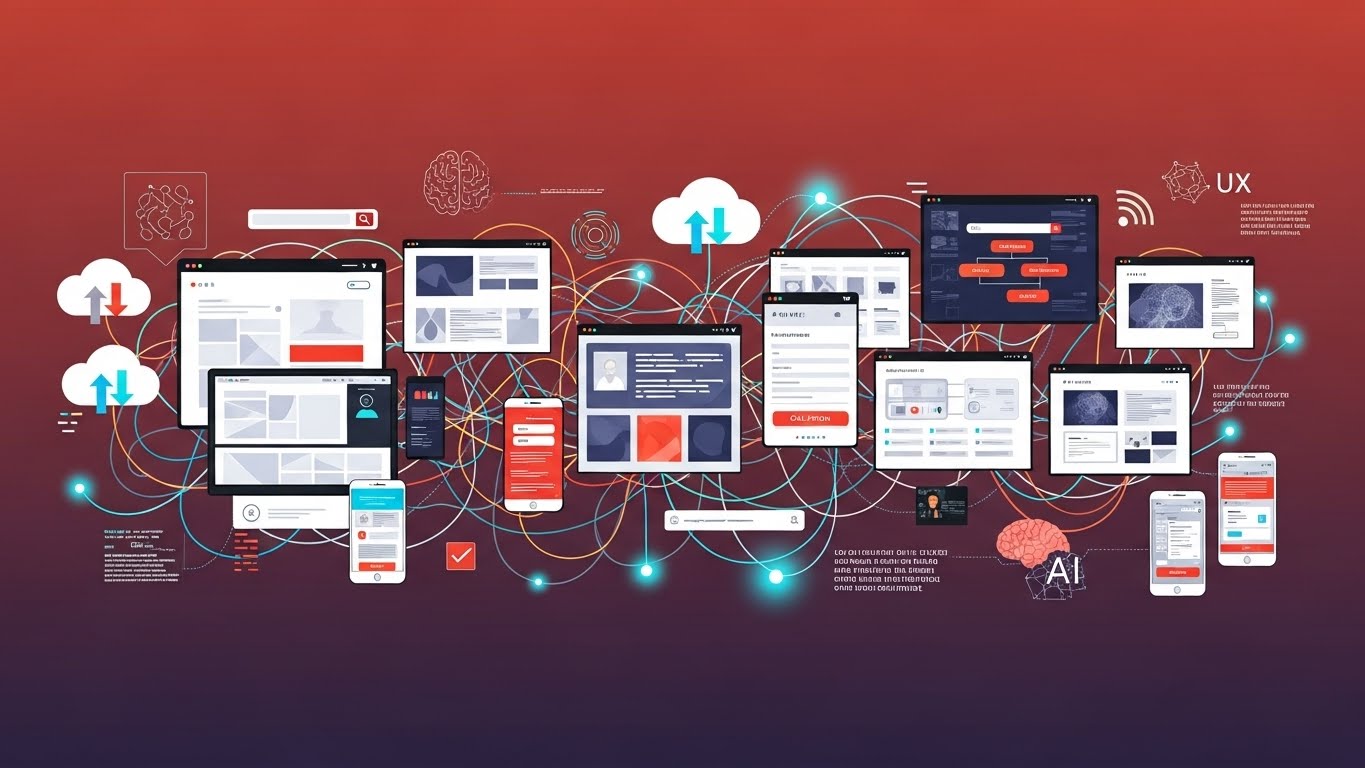
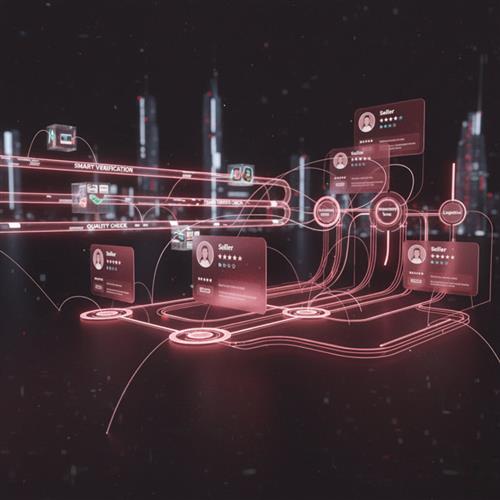

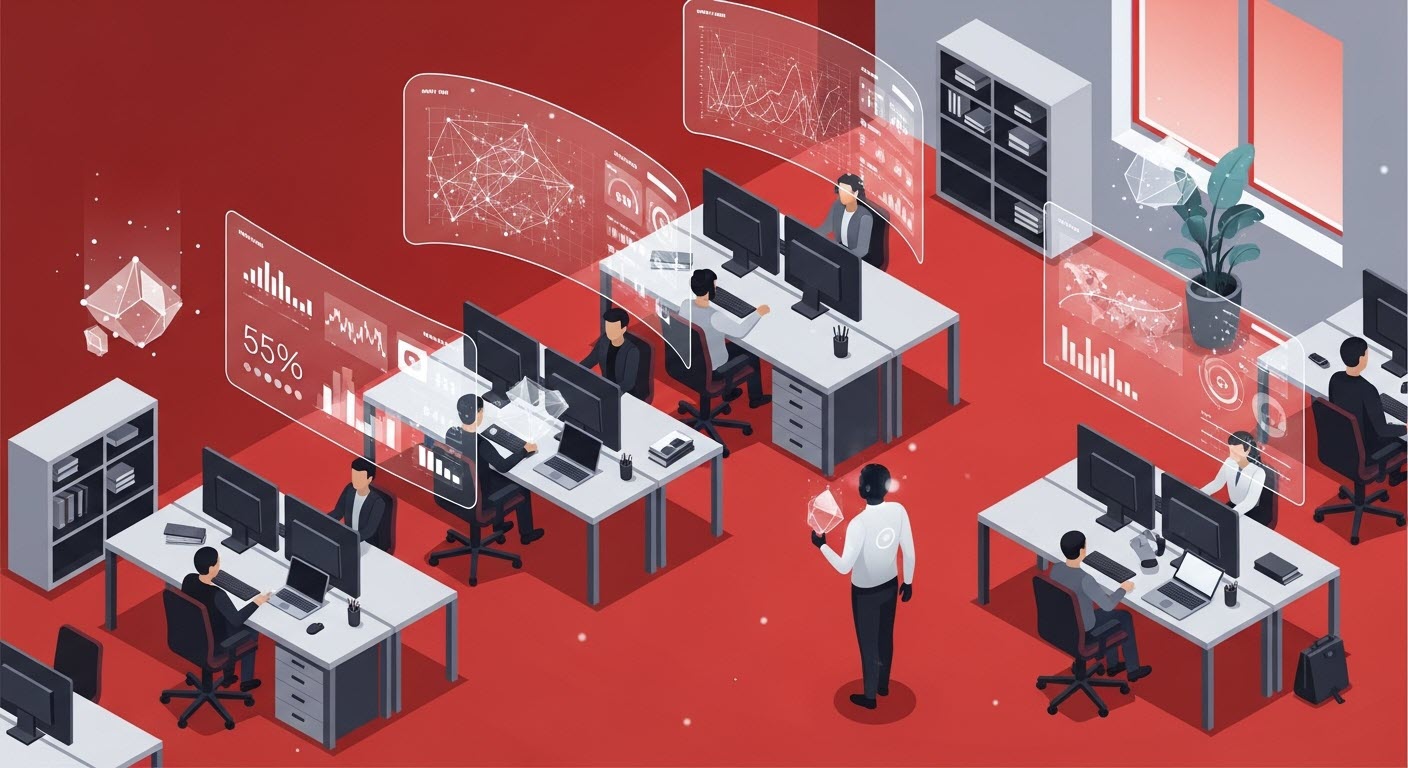
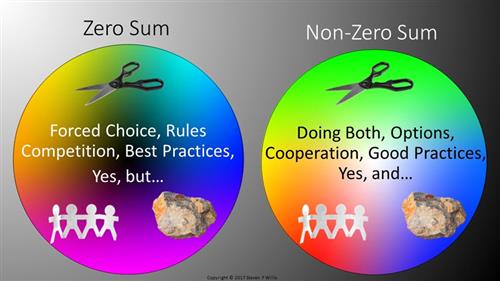
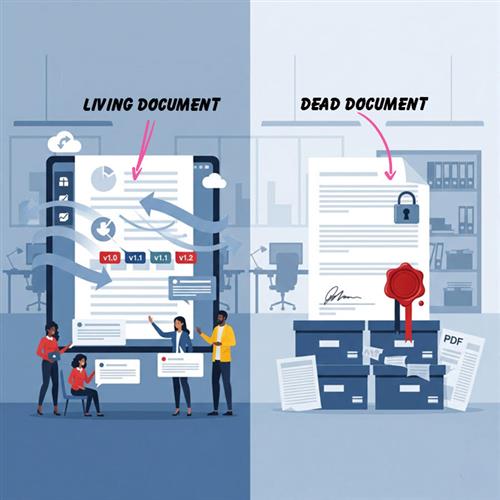
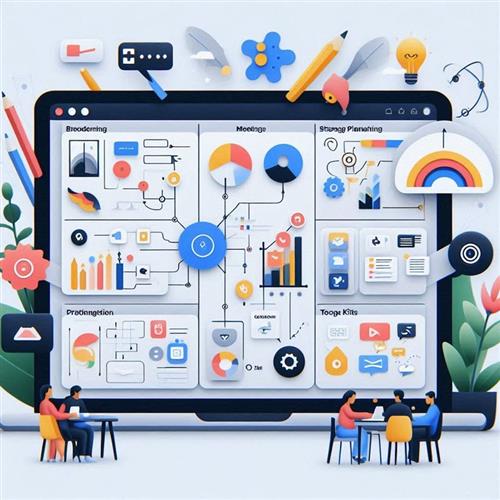
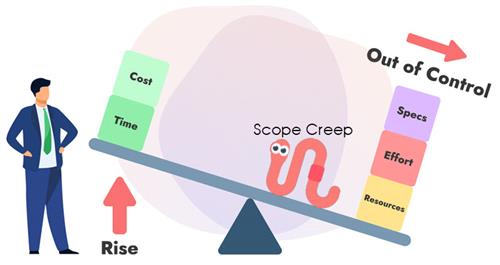
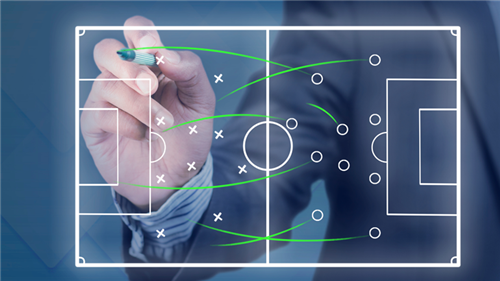
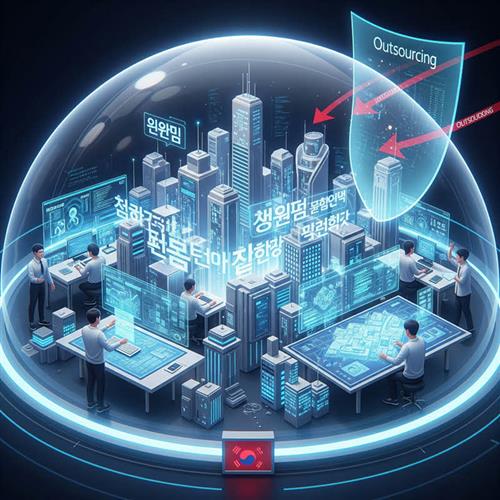
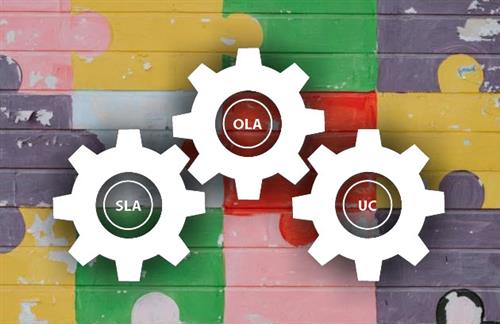
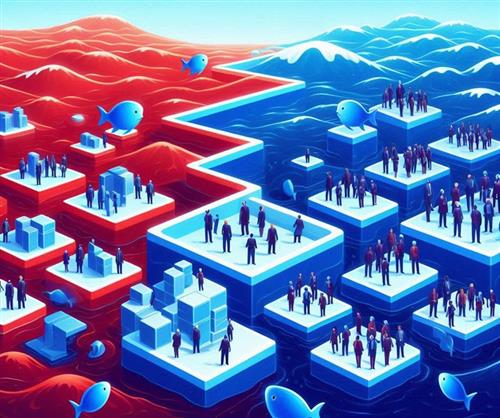
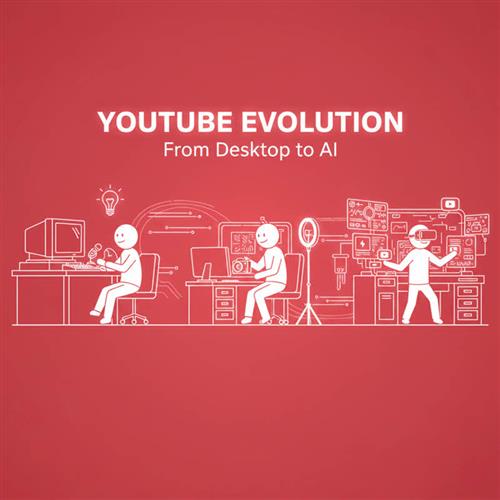
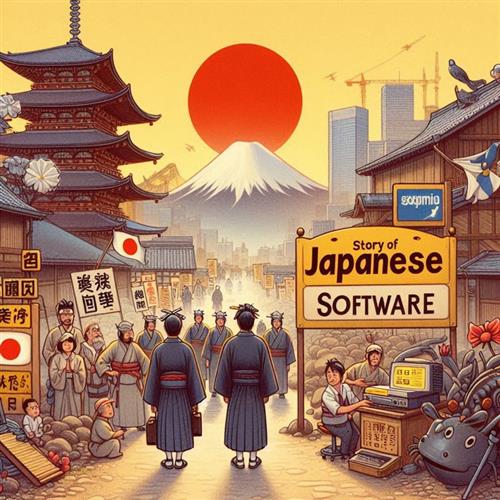
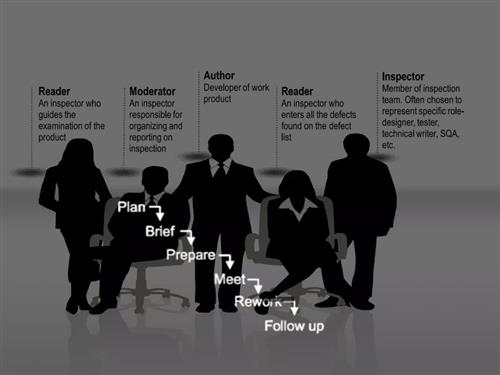
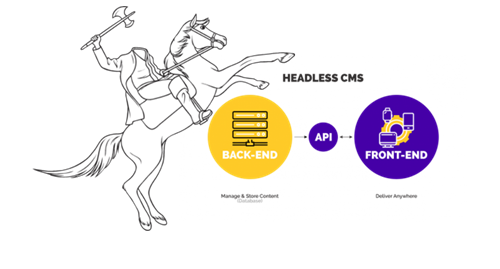

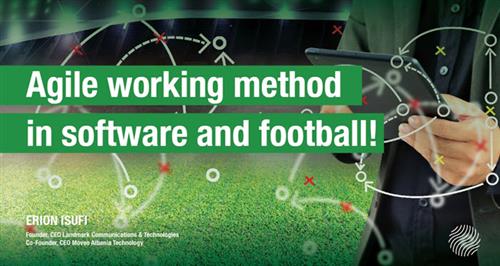
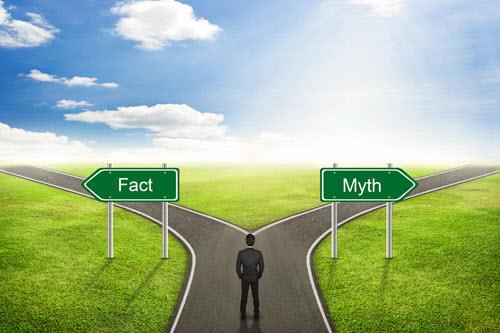
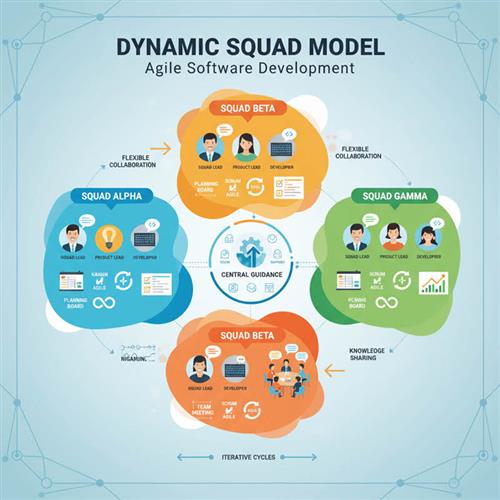
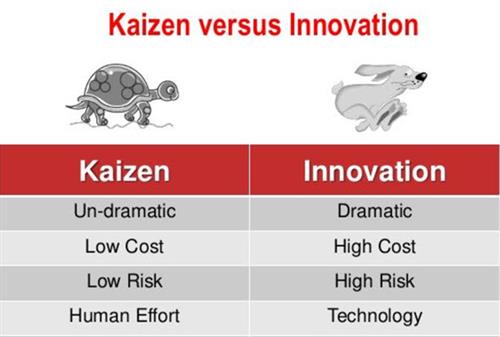

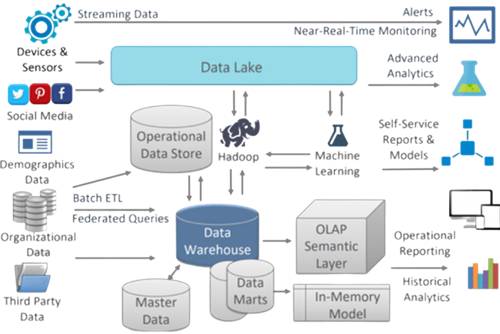
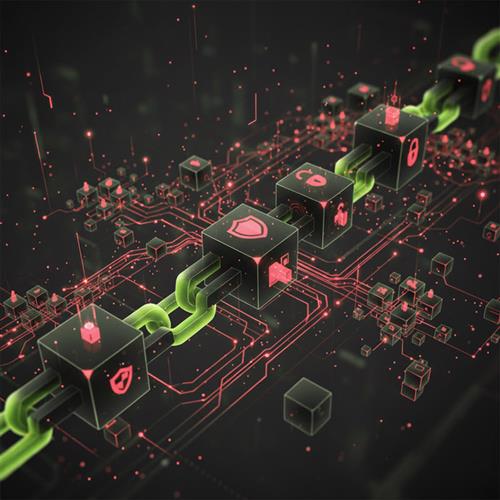





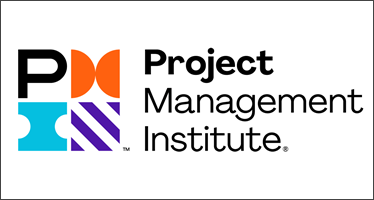



 Link copied!
Link copied!
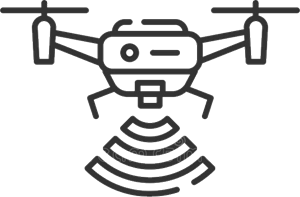 Recently Updated News
Recently Updated News